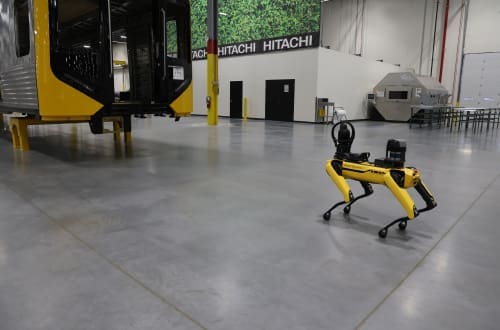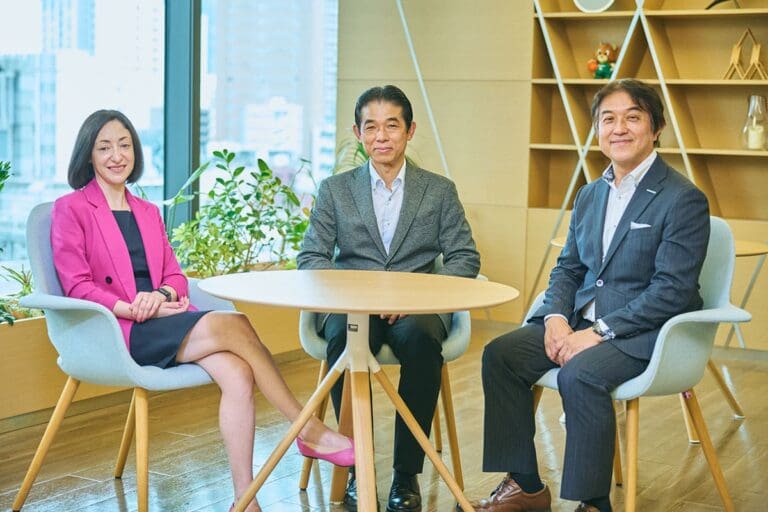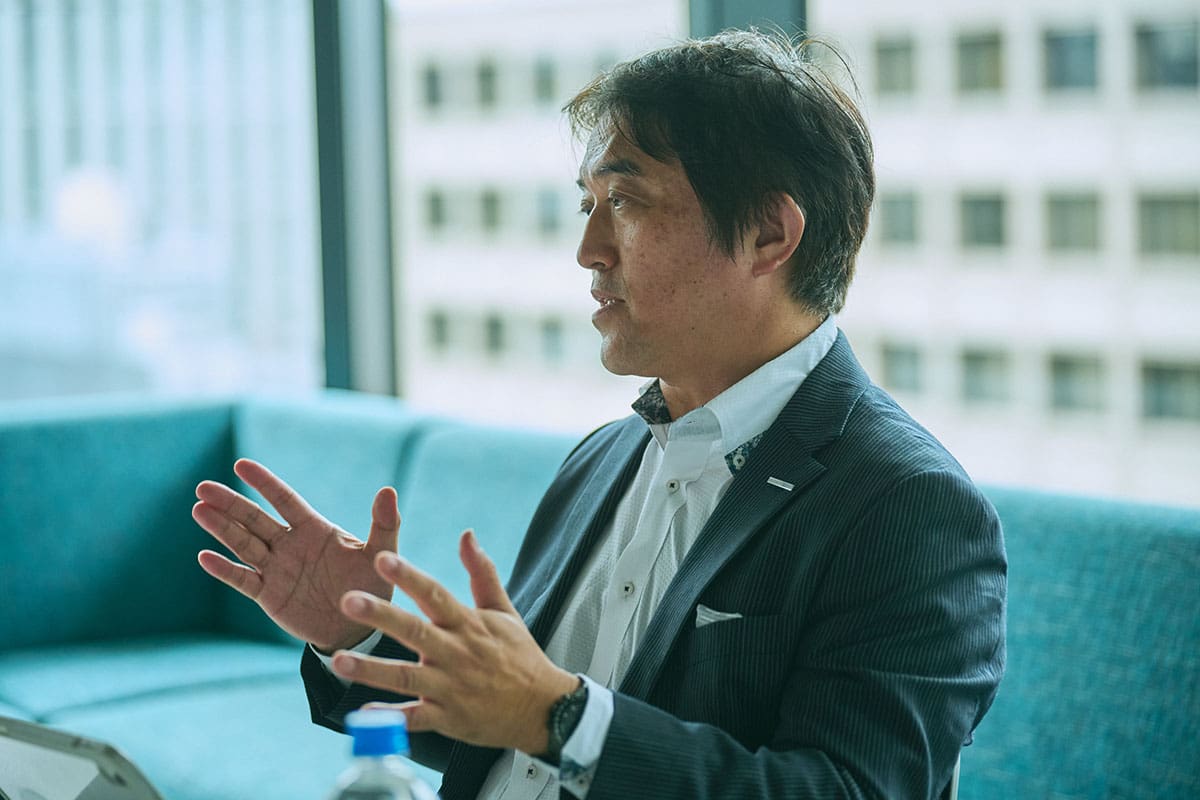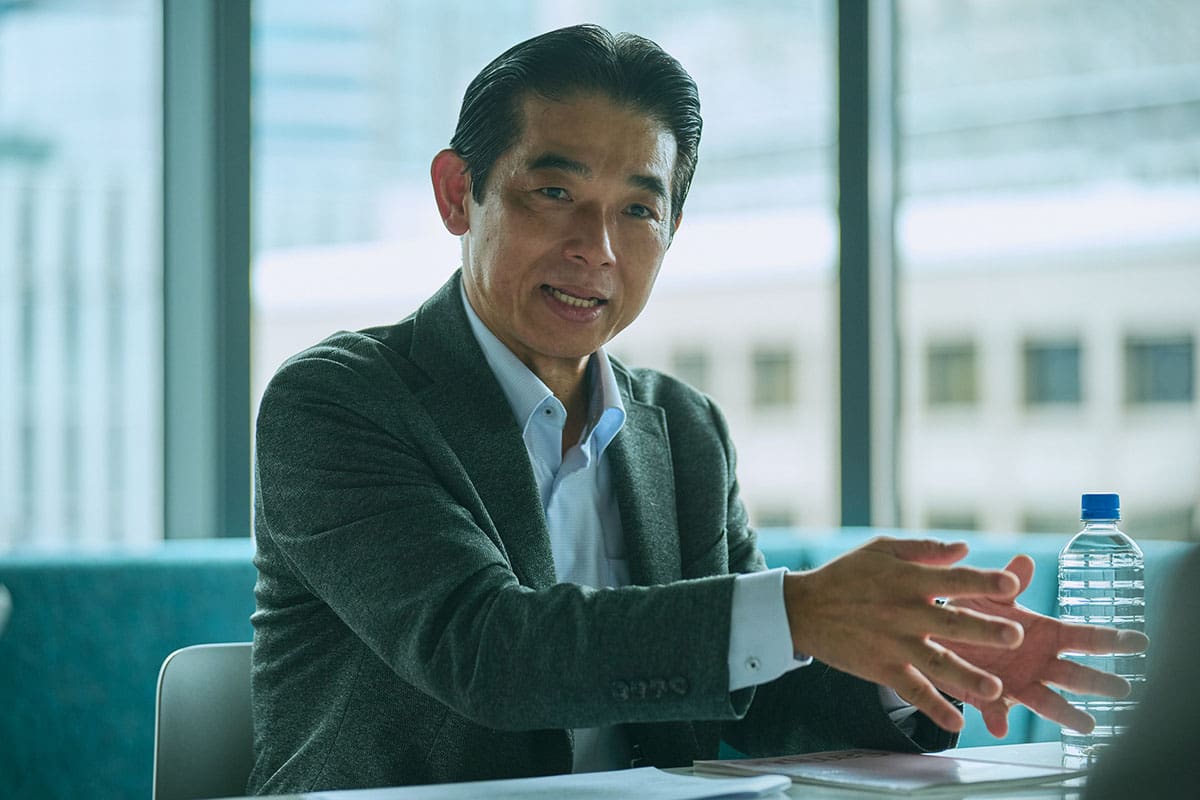- Services
Technology Capabilities
Technology Capabilities- Product Strategy & Experience DesignDefine software-driven value chains, create purposeful interactions, and develop new segments and offerings.
- Digital Business TransformationAdvance your digital transformation journey.
- Intelligence EngineeringLeverage data and AI to transform products, operations, and outcomes.
- Software Product EngineeringCreate high-value products faster with AI-powered and human-driven engineering.
- Technology ModernizationTackle technology modernization with approaches that reduce risk and maximize impact.
- Embedded Engineering & IT/OT TransformationDevelop embedded software and hardware. Build IoT and IT/OT solutions.
- Industries
- GlobalLogic VelocityAI
- Insights
BlogsDecember 16, 2024Gene LeybzonAccelerating Digital Transformation with Structured AI Outputs
This code produces the following output that can be imported into the candidate trackin...
 BlogsOctober 30, 2024Yuriy Yuzifovich
BlogsOctober 30, 2024Yuriy YuzifovichAccelerating Enterprise Value with AI
Discover how financial services integrations are transforming from standalone offerings...

- About Us
Press ReleaseGlobalLogicSeptember 23, 2025Hitachi agrees to acquire German data and AI services firm ...
Strengthening GlobalLogic’s data and consulting capabilities and expanding footprint in...
 Press ReleaseGlobalLogicSeptember 10, 2025
Press ReleaseGlobalLogicSeptember 10, 2025GlobalLogic and Ericsson Deploy Private 5G Network at Hitachi ...
The new infrastructure is the digital backbone of the Hagerstown plant, enhancing effic...

- Careers
 All News
All NewsWhat Co-Creation with GlobalLogic Brought to Hitachi High-Tech: The Reality of Organizational Transformation Through Agile
ShareThe platform modernization project driven by the co-creation between Hitachi High-Tech and GlobalLogic moved from extensive discussions to a concrete development phase. At this stage, Hitachi High-Tech fully engaged with GlobalLogic’s signature approach to DX support: agile development. How does this challenge contribute to raising awareness and fostering change across the entire Hitachi Group?
This series explores the essence of Hitachi’s Lumada business, which links strengths in IT, OT, and products through data. In the first installment of the second part, we traced the background behind Hitachi High-Tech’s decision to partner with GlobalLogic to develop a next-generation platform, and followed the journey of overcoming a major barrier: the differing philosophies regarding “quality.”
When two distinct cultures collided, the two companies built a true co-creation relationship. How did they translate these philosophies into concrete development processes and implement transformation? In this latter half, we examine the core challenge of adopting agile development, the outcomes it produced, and the prospects for the future.
GlobalLogic’s “Co-Creation Philosophy” That Redefined the Meaning of Partnership
Hitachi High-Tech aims to drive manufacturing innovation in the semiconductor industry through data utilization and to transform itself into a solution partner leading this change. Achieving this requires genuine co-creation that transcends technical and organizational boundaries. However, as Shinichiro Fukushima, Director of Lumada Innovation Hub Tokyo, points out, “Even within Hitachi, there are not many teams that can do this,” highlighting the challenging journey ahead. The partner walking alongside Hitachi High-Tech in this challenge is GlobalLogic.
As mentioned in the first part, the co-creation between Hitachi High-Tech and GlobalLogic began with thorough discussions. Toru Isoguchi of Hitachi High-Tech recalls that for a company that had perceived partners as entities that would simply “develop according to specifications,” GlobalLogic’s approach was strikingly novel.
“GlobalLogic doesn’t simply act on requests. Through discussions with us, they seek to deeply understand ‘what we truly want to achieve,’ and from that understanding, they dedicate themselves to proposing best practices,” Isoguchi explains.
Yuliia Shtukaturova of GlobalLogic adds, “We have extensive experience and knowledge in co-creating with companies across industries worldwide. We can systematically implement the clear best practices that result from this experience. Through dialogue with customers, we visualize the essence of challenges using design thinking and work to solve them. We applied this methodology in our project with Hitachi High-Tech as well.”

Yuliia Shtukaturova(Senior Vice President & Head of EMEA, GlobalLogic)
Committing to “True Agile”
After extensive discussions, the concept was finalized, and the next-generation platform project entered the development phase. Here, Hitachi High-Tech faced a new working style: the full adoption of GlobalLogic’s “agile development process,” which has achieved proven results across numerous global companies.
Until then, Hitachi High-Tech was accustomed to “waterfall” development, where requirements are fixed and development proceeds in stages. Fully adopting an agile development approach represented a major challenge. Isoguchi reflects:
“We hadn’t completely ignored agile development before; it had been implemented experimentally in some areas. But GlobalLogic’s agile process was, honestly, on a completely different level. When we saw it firsthand, I immediately felt not only the desire to master this approach and make the project a success, but also that it would be a valuable opportunity to develop our mid-career and junior engineers.”
As a result, the GlobalLogic team came to Japan to provide training.
A Development Site Where Cultures Merge: Insights Gained Through Shared Effort
In waterfall development, requirements definition, design, implementation, testing, and operations flow sequentially based on the initial plan. In contrast, agile development is carried out in short cycles called sprints, with continuous feedback, flexible revisions, and incorporation of the latest technologies. So what made GlobalLogic’s agile process “on a different level”?
GlobalLogic demanded a pace where events occurred almost daily. They divided each three-month development span into three sprints: “current development,” “review of the previous cycle,” and “discussion of the next cycle.” Isoguchi describes it as “a development approach we had never experienced before—truly shocking.”
Shtukaturova explains, “Creating new digital solutions requires an approach different from the traditional OT-led approach, which demands high quality from the start. Initially, hypotheses are tested at lower quality, and quality is gradually increased over time. Only when a high level of quality is achieved is the solution released. There is no fixed specification document on day one; the key is to respond ‘on the fly’ with speed and flexibility.”
Hitachi High-Tech’s design and development teams initially found GlobalLogic’s approach confusing. At times, they requested development to proceed as in a waterfall process, expecting solutions to be delivered exactly as asked. GlobalLogic, however, required discussions at every step, sometimes leading to intense disagreements.
Language barriers also posed challenges. Agile development was conducted primarily in English. Facilitators from both Hitachi High-Tech and GlobalLogic were appointed to facilitate discussions, but more importantly, each team member had to be proactive in communication.
It was indeed a strenuous journey where “both companies had to sweat together,” but Shtukaturova notes, “This series of training sessions laid a truly excellent foundation for the subsequent development.”

Shinichiro Fukushima (Lumada Collaboration LIHT Director, Hitachi)
Fukushima nods deeply in agreement with both, saying, “Transformation cannot truly succeed unless the organization and its people change. This co-creation initiative marked a significant step forward in the most difficult part of that process—‘changing people.’ Through the discussions of the two parties, I was once again convinced that GlobalLogic is an indispensable piece for the Hitachi Group to achieve genuine transformation.”
Beyond Development Success: An Evolving Platform That Opens the Future with Customers
Development of the next-generation platform began in July 2024, and the first phase was completed in approximately six months. A key feature is the adoption of a microservices architecture, which modularizes common functions. This unified authentication and data storage that had previously varied across applications, allowing developers to focus on functional development for each piece of equipment. As a result, development efficiency was significantly improved.
Container orchestration also enables scaling of data volume and processing performance. The adoption of zero-trust security has greatly enhanced operational safety. By building software on a robust cloud foundation, the platform can fully leverage cutting-edge technologies such as generative AI, meeting all initially set development requirements.
Differences in the approach to “quality assurance,” discussed in the first part, have also created even greater value by combining the strengths of both companies. Specifically, GlobalLogic raises quality through automation using standard frameworks and modern applications, while Hitachi High-Tech ensures compliance with its product shipping standards. This double-check approach maintains overall high quality.
Although the first phase of platform development is designed to support only Hitachi High-Tech products, from 2025 onward, considerations are underway for connectivity with other manufacturers’ products and functional expansion.

Toru Isoguchi (Corporate Officer, Deputy Group General Manager, Nano-Technology Solution Business Group, and General Manager, Business Strategy Planning Div., Hitachi High-Tech)
“Semiconductor manufacturers operate many production tools from other companies as well. The next-generation platform we are developing is designed to support third-party equipment, with a vision of connecting all machines within a factory and enabling third-party applications. When we explain this to our customers, the response is extremely positive, and expectations are high,” says Isoguchi.
Shtukaturova also highly values the benefits the new platform delivers. “We always pursue two key types of value for our customers: efficiency and monetization. For example, one feature of this platform is predictive maintenance. It detects early signs of potential equipment failure and prompts preventive action, minimizing downtime. By preventing manufacturing delays, this enhances operational efficiency and can ultimately contribute to increased revenue.”
The next-generation platform, created through the co-creation between Hitachi High-Tech and GlobalLogic, is expected to foster long-term relationships with customers and evolve by timely incorporating new needs.
Finally, Fukushima, who has been guiding this dialogue as a navigator, spoke passionately about the true significance of this co-creation and its importance for the future of the entire Hitachi Group.
“The Hitachi Group has historically focused on pursuing ‘performance,’ raising product specifications. What GlobalLogic has brought is a perspective of ‘value’—how that performance drives the success of our customers’ businesses. Their role is to convey this customer-centric viewpoint within Hitachi and realize it in a digital form.”

The challenges faced by companies are diverse, extending far beyond the semiconductor industry highlighted here—for example, addressing carbon neutrality. Companies are constantly seeking solutions to these challenges. Such demands cannot be met simply by improving products or services individually. It is necessary to listen to customers’ voices and explore solutions together, connecting individual products digitally. This approach closely aligns with Hitachi’s “One Hitachi” philosophy, which brings the full strength of the company together.
“As a DX driver to realize One Hitachi, GlobalLogic leads the way in customer engagement. Today, the Hitachi Group is beginning to absorb this philosophy and culture. If initiatives like the Hitachi High-Tech project spread, I am confident that, in the near future, combining Hitachi’s strengths in IT, OT, and products will create tremendous power,” says Fukushima.
 How can I help you?
How can I help you?
Hi there — how can I assist you today?
Explore our services, industries, career opportunities, and more.
Powered by Gemini. GenAI responses may be inaccurate—please verify. By using this chat, you agree to GlobalLogic's Terms of Service and Privacy Policy.
